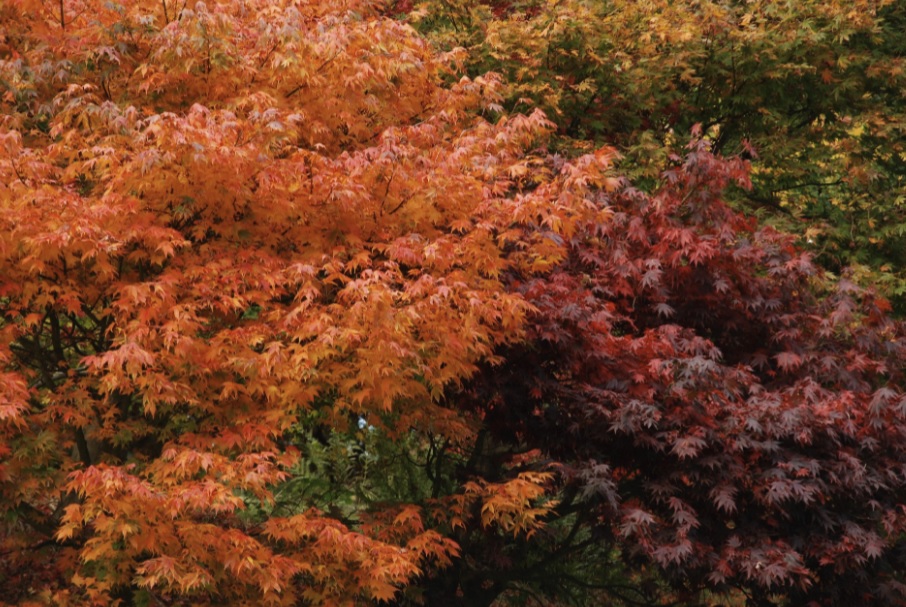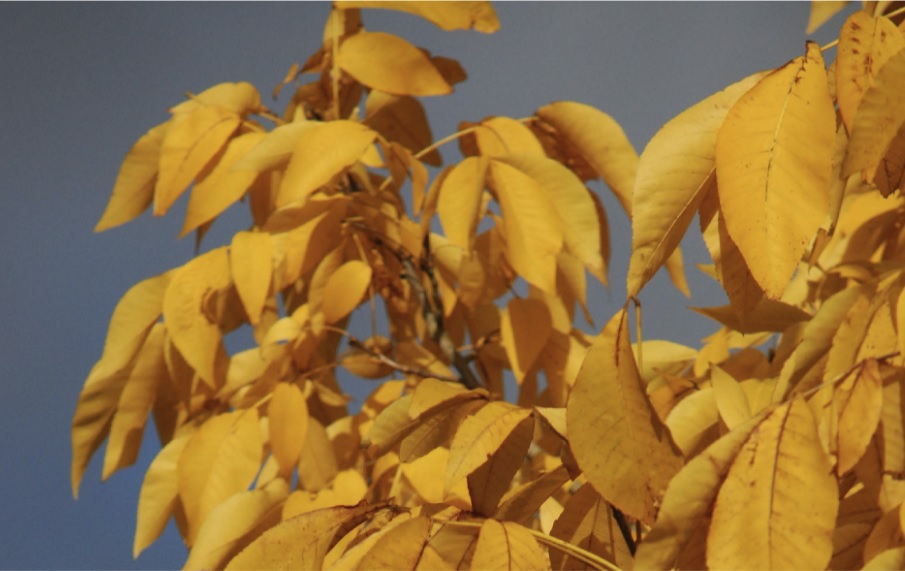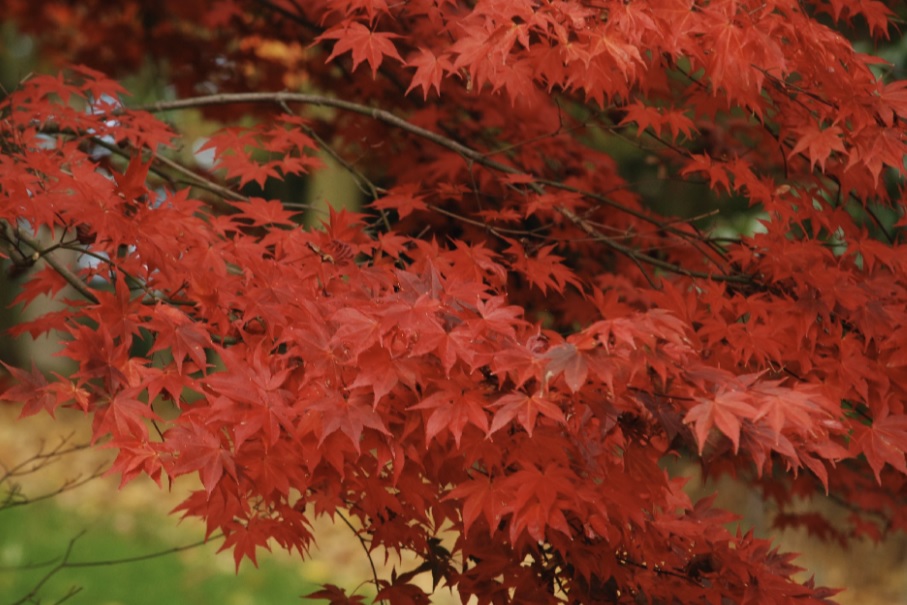colours of unusual intensity, oranges, yellows and reds. Look at the picture below with its wonderful array of leaf colours. What is going on; how does this all come about? What’s the point from the trees’ point of view?

amounts of the green pigment, chlorophyll, which absorbs a high fraction of
sunlight, particularly the blue and red, but not green light. That’s why a leaf looks green; green light is not absorbed. The sun’s energy, trapped by the chlorophyll, is the starting point for photosynthesis, the conversion of carbon dioxide and water into carbohydrates and oxygen. The world benefits by this uptake of carbon dioxide, and animals, in particular, benefit from the oxygen produced. Indeed there is increasing evidence that plant growth around the world is increasing significantly because of higher levels of carbon dioxide. But leaves contain other pigments, chiefly carotenoids of several sorts, which are yellow or orange in colour. Some leaves contain so much of these other pigments that they have a yellow tint even before autumn comes. But most leaves contain about ten times as much chlorophyll as these other pigments, so they look predominantly green. The function of the carotenoids is partly to absorb light of a different colour than does chlorophyll, which is useful at low light intensities, but also to reduce damage to chlorophyll when there are excessive levels of light – chlorophyll can get all the energy it needs from only one-third of the sunlight on a bright day. Even so, chlorophyll molecules are broken down during exposure to light and need to be replaced. In summer the replacement is fast enough to keep the leaves green.
As autumn approaches, however, the rate of chlorophyll replacement slows
down, probably from the lower temperatures – most reactions occur more
slowly at lower temperatures. As a result, there is steadily less chlorophyll in leaves. Now, since the breakdown products of chlorophyll are colourless, the other pigments become increasingly more visible, so the leaves become steadily more yellow or orange. The exact colour depends on what are the other pigments in the particular leaf. Some leaves contain a lot of beta-carotene, the pigment that gives its colour to carrots, so those leaves become orange in colour. Others contain more of pigments called xanthophylls (Greek for ‘yellow leaf’), coloured yellow, so, in them, the autumn colour is yellow – as in birches and aspens, for example, or the hickory below.

photograph below. This colour comes about from the appearance in the leaves
other pigments, the anthocyanins. In most European woods, only 10% of trees
produce these pigments, but, famously, in New England, up to 70% of trees
produce these red pigments and their ‘fall colors’ are that much more
spectacular. Anthocyanins are produced by the leaves to protect themselves
from light damage at the lower temperatures in autumn; they act as a sort of sunscreen. So anthocyanins are only produced in autumn as temperatures fall and in years when light levels are high. So a cold, bright autumn will favour red colours. Anthocyanins may also act as warning signals to insects that the tree is loading itself with poisonous protective compounds to repel insects that might use the tree as a host for winter. The combination of anthocyanins and xanthophylls can give colours that range from fiery red through orange to pure yellow, depending on the relative proportions of the pigments in the leaves.

themselves broken down and absorbed, leaving only the brown colour of the
cell walls. These breakdown products, and those of chlorophyll breakdown, are stored elsewhere in the tree, so that next summer they can be used to make new pigments.